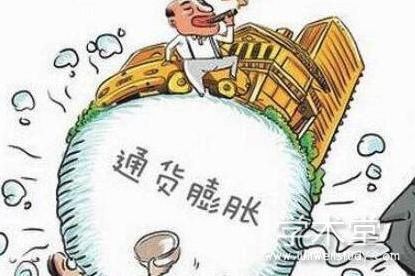On May 15, the website of the German news TV channel published an article by Horst von Butral, editor-in-chief of the German magazine Capital, saying that inflation is becoming a key problem for the market. The full text is edited as follows:
The message from banks is that higher prices are a "blip" after the outbreak. But the markets don't agree, because the situation is more complicated.
The fear of inflation has been driving markets and everyday life for some time. This week, the trend has intensified sharply again. People can feel the price of oil go up at the pump. Investors and businesses, as well as artisans, are sensing rising prices in raw material markets and specialist hardware stores. Janet Yellen, the US Treasury secretary, sent shockwaves through the markets two weeks ago with her comments about rising inflation and interest rates. Bank of America calculates that usage is up 800 per cent compared with a year ago. All this has bedeviled equity markets, with technology stocks particularly hard hit.

Data from the US have caused turbulence: consumer prices rose 4.2 per cent in April from a year earlier. Inflation in the United States is at its highest rate since 2008, well above expectations.
Inflation in Germany has also risen since the start of the year and is now 2 per cent.
The following three points are important to me, whether or not they are relevant to people's identities as investors or their daily lives.
First, not only has the COVID-19 distorted the GDP/debt ratio, but it has distorted it more than expected. Statistically speaking, we are facing the darkest month in decades, and there is a lot of catch-up effects and pent-up demand: people want to travel and get back to their old lives, and they have a lot of money that they want to spend because of this epidemic. Germans' saving rate, for example, rose to an all-time high of 16 per cent of income in 2020. So demand is growing, which is good news, but supply is not keeping pace everywhere. The car industry, for example, is short of chips, which is why used-car prices are rising in the United States.
The second point is the trillions of dollars that President Joe Biden has pumped into the U.S. economy, including checks, assistance to families, and promises to invest in a green future. His aid and investment plans inspired many European politicians and economists, but were warned from the start that it was an experiment and a risk. As a result, the U.S. economy is expected to grow at its fastest pace since 1980.
Economists have warned that the US economy could be at risk of overheating and a surge in inflation. So far, all the inflation data bear out this risk.

The third point I call the paradox of inflation. In fact, inflation has been disappearing, even negative, for several years, and central banks have tried desperately and sometimes vainly to raise it to the 2 per cent target. However, once inflation starts, it is immediately associated with words like "fear", "worry" or "danger". Not because people are scared, but because it could be a sign that the flood that has driven up so many asset prices for so many years is coming to an end.
This is the second experiment in the US besides the Democrats' trillion-dollar stimulus that has, in theory, been running in the background for longer: a paradigm shift at the Federal Reserve last summer. At the time, Fed Chairman Colin Powell made it clear that he would live with higher inflation for some time.
The European Central Bank is also considering reviewing its strategy to accommodate the Federal Reserve: allowing higher inflation for a period of time. Europe is much less resilient because the recovery is fragile, there are no new trillions of dollars and the ECB has not been as effective in controlling inflation in the past.

